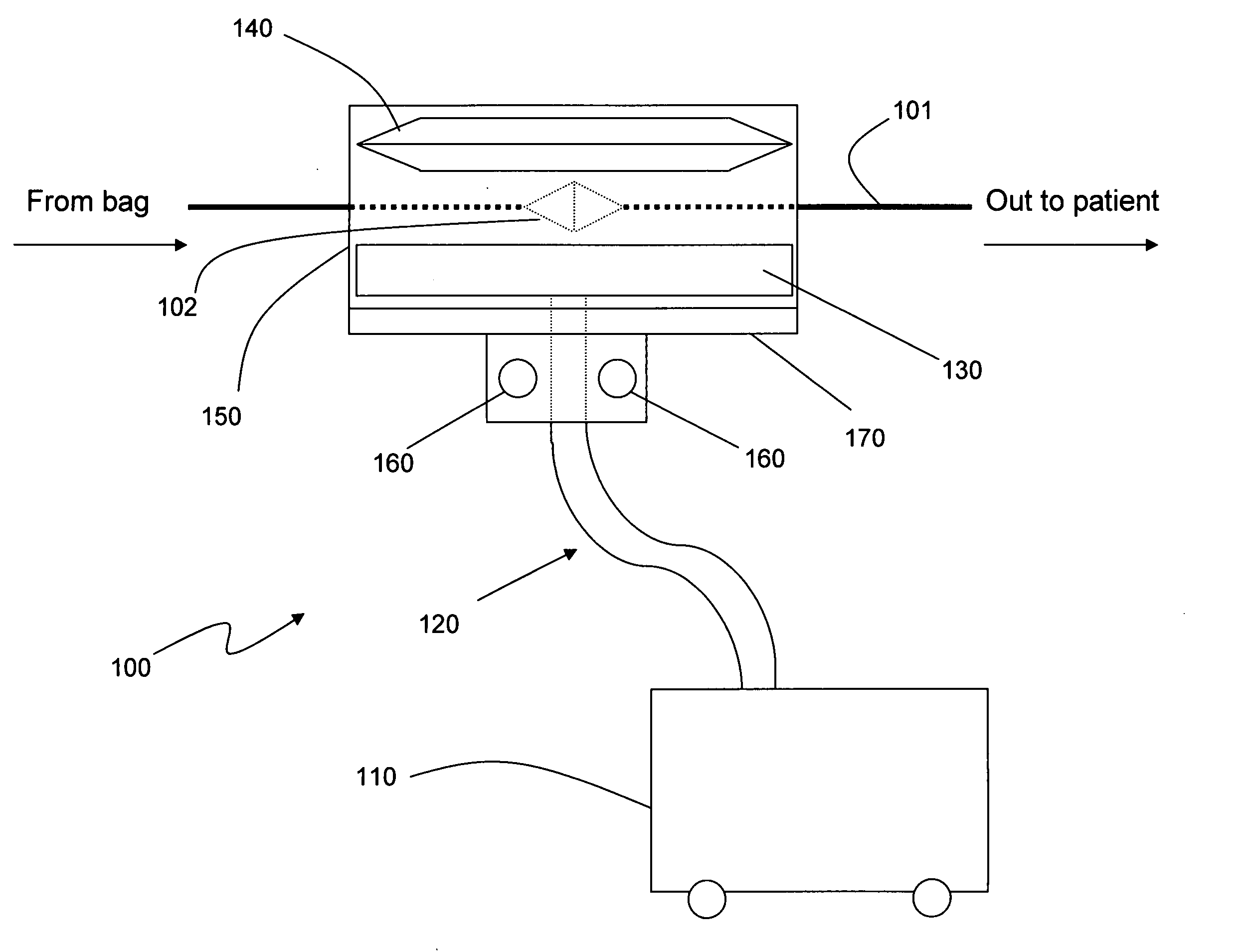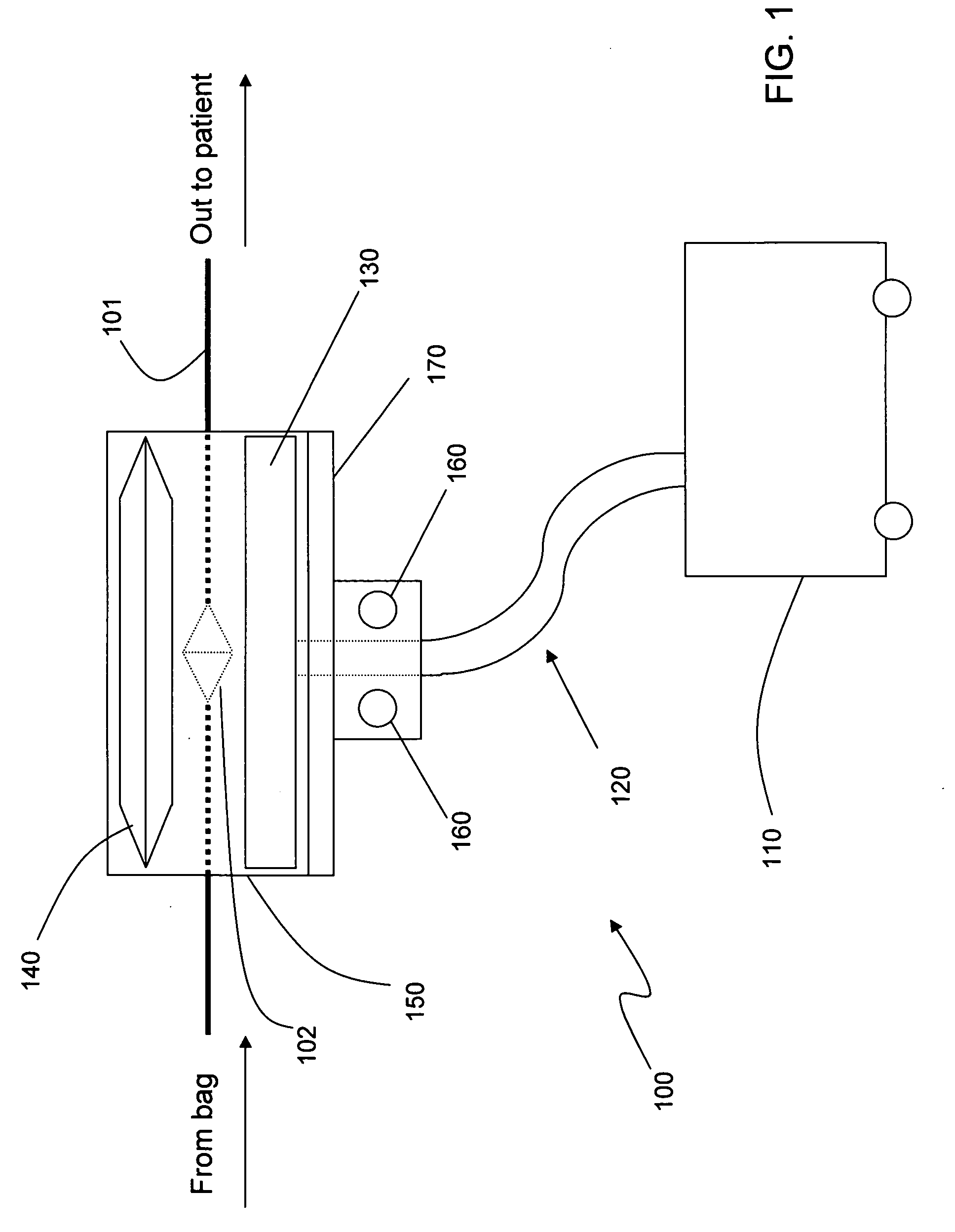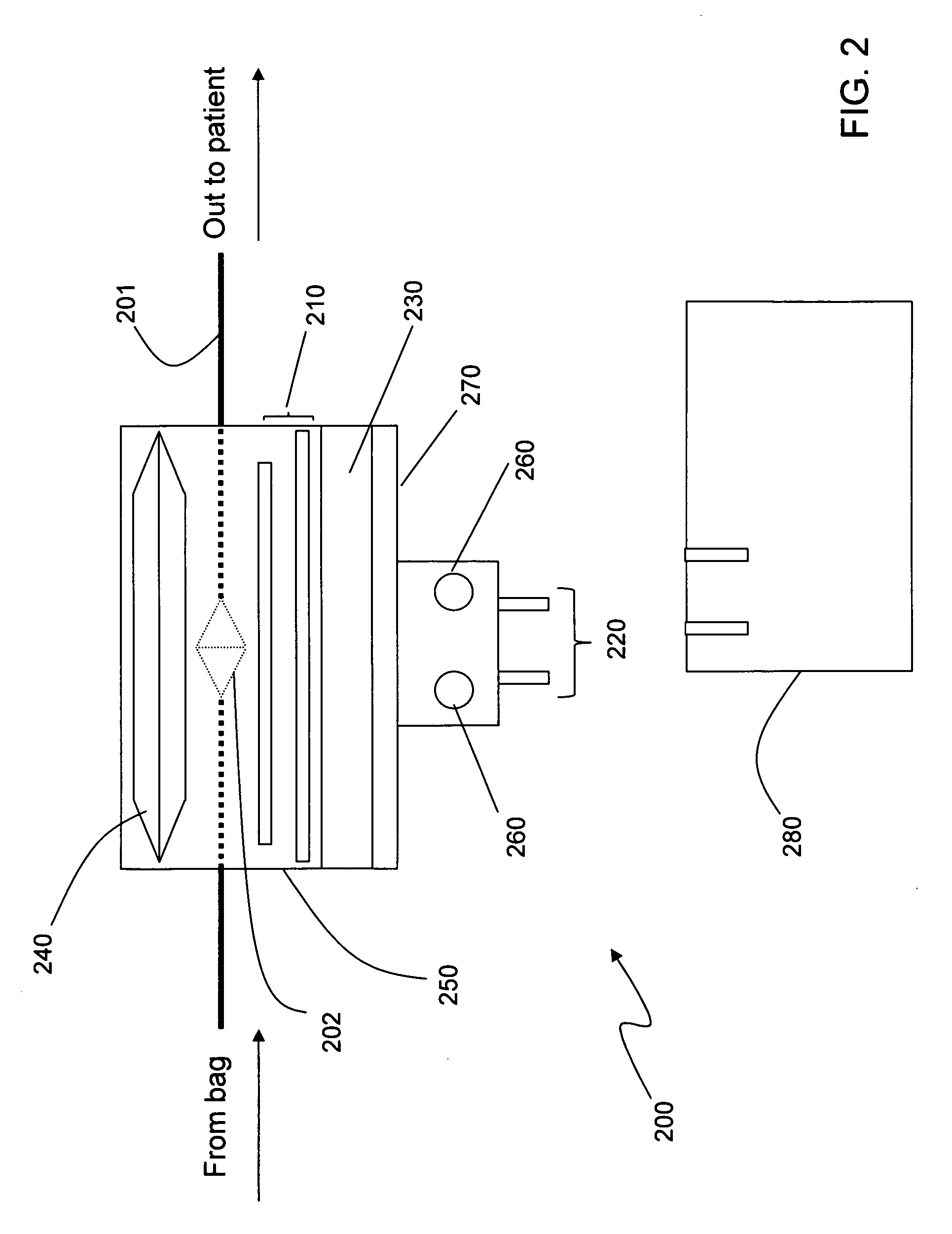Intravenous catheter connection point disinfection
a technology of intravenous catheters and disinfection points, applied in the field of medicine, can solve the problems of significant morbidity and mortality, large cost, and infection stemming from the use of intravenous catheters, and achieve the effect of preventing radiation leakag
- Summary
- Abstract
- Description
- Claims
- Application Information
AI Technical Summary
Benefits of technology
Problems solved by technology
Method used
Image
Examples
Embodiment Construction
[0013]Underlying the utility of the system described herein is a recognition that the act of disconnecting a catheter and reconnecting it to new bags of fluids or medications represents a source of bacterial contamination leading to nosocomial intravenous catheter infections. As further discussed elsewhere herein, the system may include a device that is designed to attach snugly around a newly reconnected catheter (or stoppered blind-ended catheter) and deliver a high dose of ultraviolet radiation (or other type of radiation) to the catheter connection point and adjacent tubing, effectively sterilizing and / or disinfecting the tubing and contained fluid at and around the catheter connection point site prior to resumption of fluid flow into the patient. The method and device of the system described herein may be used to sterilize a new connection point between fluid and catheter prior to resumption of fluid flow through the connection point. The system may also be used when a line is ...
PUM
| Property | Measurement | Unit |
|---|---|---|
| permeability | aaaaa | aaaaa |
| transmission | aaaaa | aaaaa |
| UV radiation | aaaaa | aaaaa |
Abstract
Description
Claims
Application Information
 Login to View More
Login to View More - R&D
- Intellectual Property
- Life Sciences
- Materials
- Tech Scout
- Unparalleled Data Quality
- Higher Quality Content
- 60% Fewer Hallucinations
Browse by: Latest US Patents, China's latest patents, Technical Efficacy Thesaurus, Application Domain, Technology Topic, Popular Technical Reports.
© 2025 PatSnap. All rights reserved.Legal|Privacy policy|Modern Slavery Act Transparency Statement|Sitemap|About US| Contact US: help@patsnap.com



